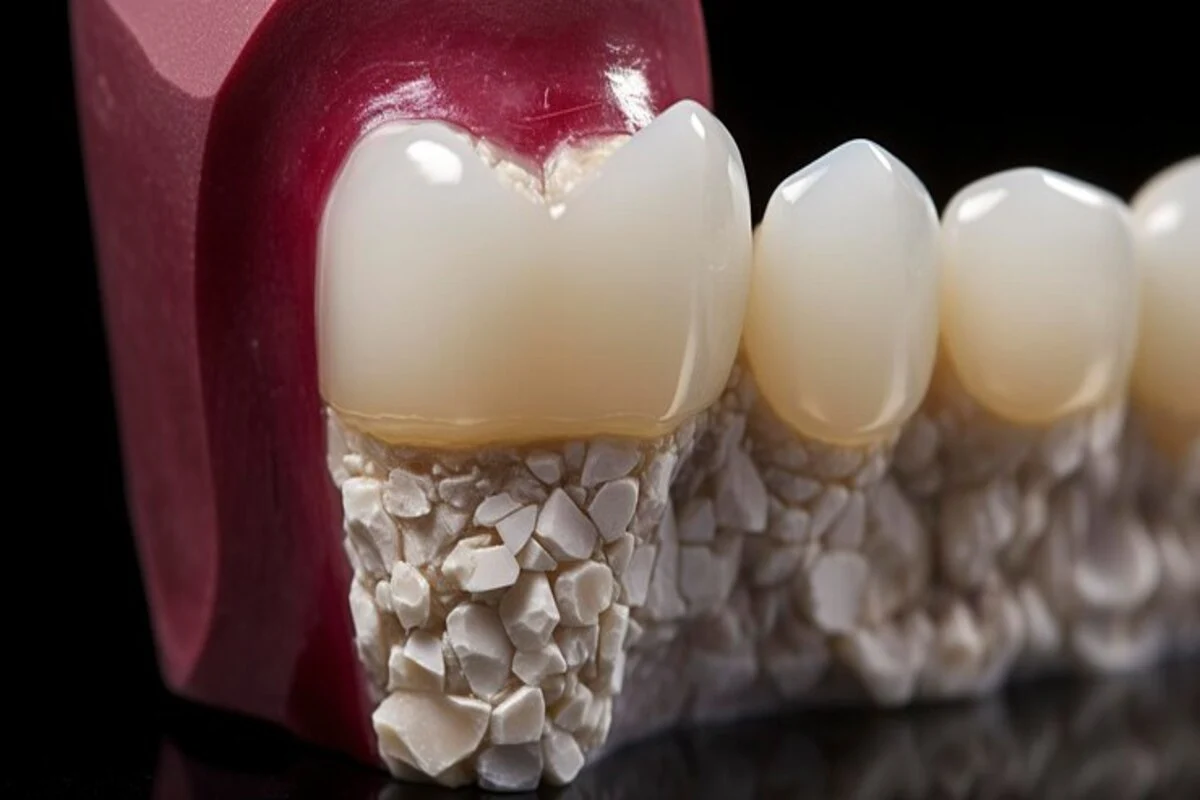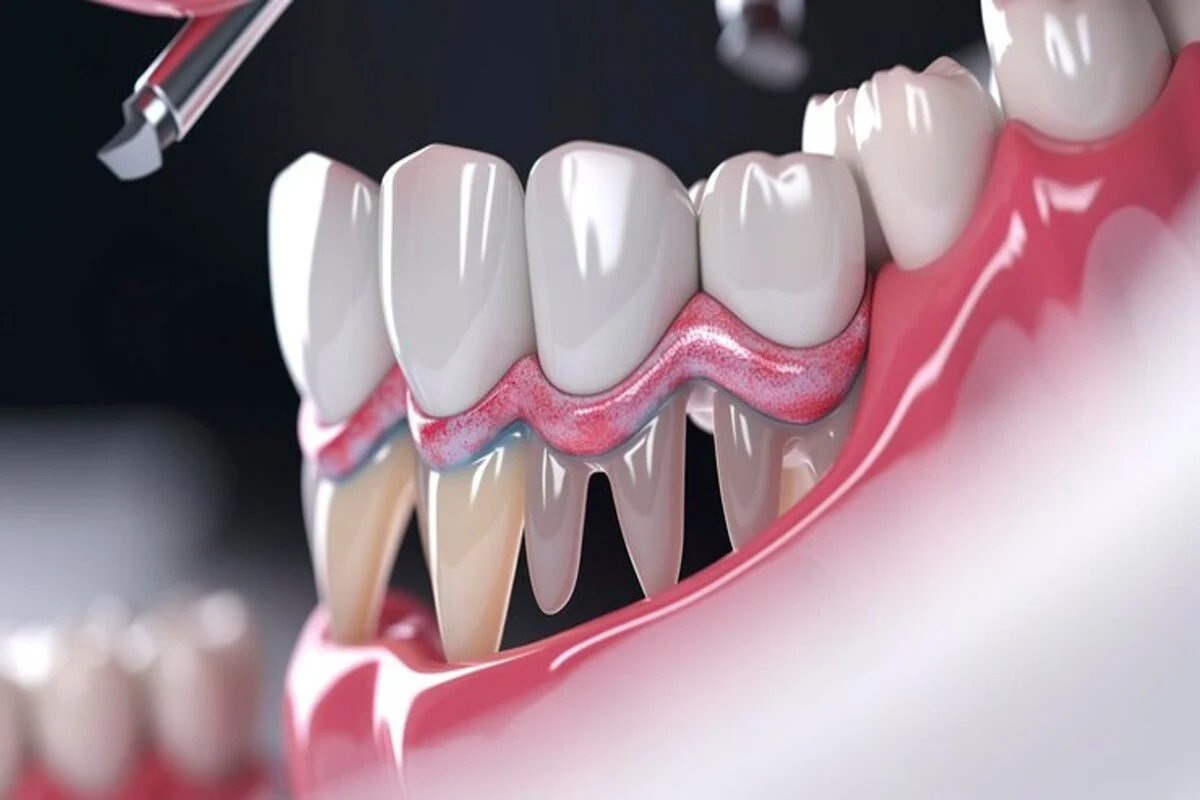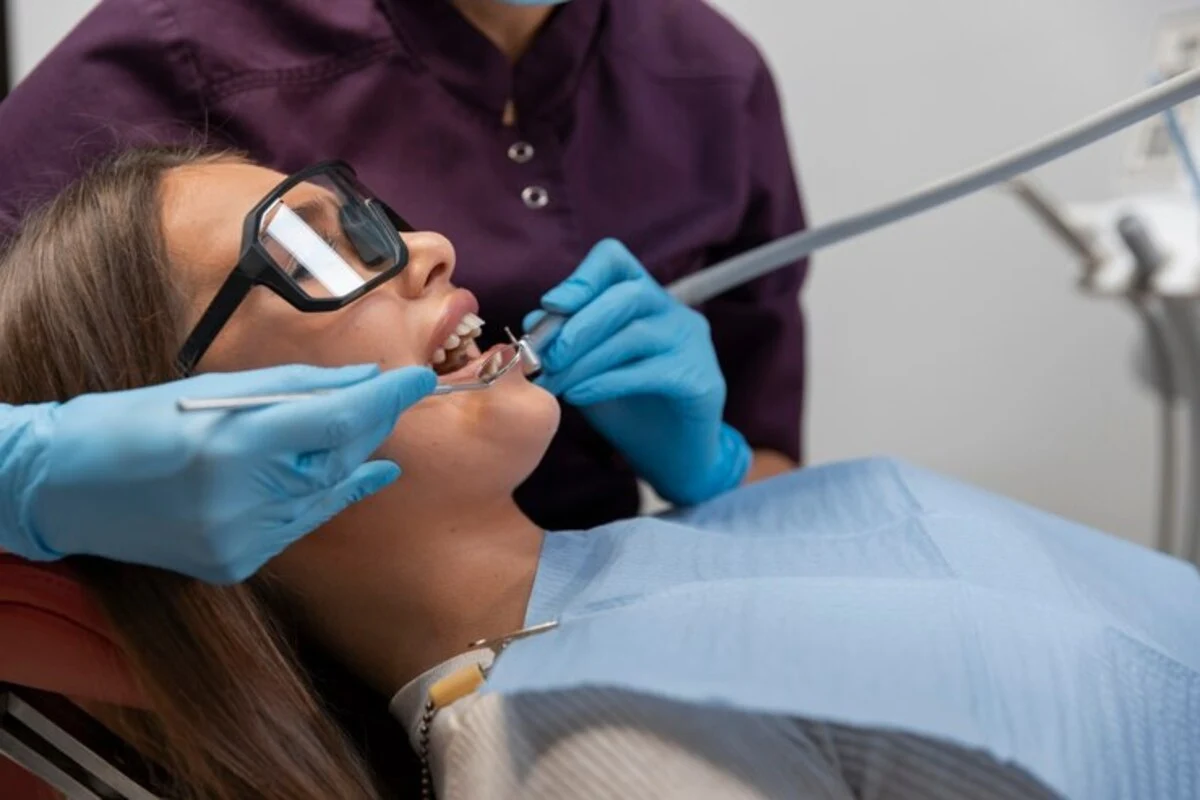Dental crowns, often referred to as “caps” stand as a cornerstone in restorative dentistry, bridging the gap between cosmetic appeal and functional necessity. They serve as a testament to dental innovation, designed to restore damaged teeth to their original glory.
Introduction to Dental Crowns
This introduction delves into the essence of dental crowns, exploring their purpose, application, and the transformative impact they have on patients’ oral health and confidence.
Understanding Dental Crowns
At its core, a dental crown is a custom-made covering that encases the entire surface of a tooth, starting from the gum line. This procedure is pivotal in restoring a tooth’s shape, size, strength, and, importantly, its appearance. Crowns are recommended for various dental issues:
Read it: A Comprehensive Guide to Dental Inlays
They protect weak teeth from breaking, restore already broken teeth or ones that are severely worn down, cover and support teeth with large fillings when there isn’t a lot of tooth left, hold dental bridges in place, cover misshapen or severely discolored teeth, and crown dental implants.
The necessity for a dental crown arises from diverse scenarios – from restoring a tooth that has succumbed to decay or trauma, to serving as a preventive measure against further dental deterioration. Crowns fortify and protect the tooth’s structure, offering a durable solution in dental restoration.
They are particularly beneficial for teeth that have undergone significant interventions such as root canal therapy, as they provide the requisite strength and protection to a tooth that might otherwise be left vulnerable.
The Evolution of Dental Crowns: From Gold to Porcelain and Beyond
Historically, dental crowns have evolved significantly in terms of materials and application techniques. Initial materials ranged from gold, other metals, to porcelain-fused-to-metal (PFM), each with its unique benefits and drawbacks. Gold crowns, esteemed for their durability and biocompatibility, were the gold standard in situations where cosmetic considerations were secondary.
PFM crowns offered a balance, providing strength due to their metal structure while offering a more tooth-like appearance with the porcelain coating.
Read it: Biomimetic Approach to Dental Implants
However, the pursuit of excellence in dental restoration has led to the introduction of all-ceramic or all-porcelain crowns, which provide the best natural color match among all crown types. This advancement underscores a significant leap towards prioritizing aesthetics alongside functionality, especially for the front teeth restorations.
Innovations in Dental Crown Technology
The field of dentistry continues to embrace technological advancements, significantly impacting how dental crowns are designed and placed. Digital impressions and CAD/CAM technology have streamlined the process, enhancing precision in crown fabrication and reducing the turnaround time for crown placement. Such innovations not only improve the patient experience by minimizing discomfort but also enhance the fit and appearance of the final restoration.
The Role of Dental Crowns in Comprehensive Dental Care
Beyond individual tooth restoration, dental crowns play an integral role in comprehensive dental care. They are pivotal in dental bridge installations, acting as anchors for the bridge, thereby filling the gap created by one or more missing teeth. Crowns also serve cosmetic purposes, providing a solution for teeth that are discolored or poorly shaped, thereby enhancing the patient’s smile and boosting their self-esteem.
Read it: Latest Advances in Dental Bridges
In the realm of preventive dentistry, crowns are employed to safeguard teeth that are at high risk of fracture or further decay, thereby averting more invasive procedures down the line. Their application following root canal treatment is crucial, as they offer protection to the treated tooth, which might be more susceptible to fracture.
Conclusion: The Transformative Impact of Dental Crowns
Dental crowns embody the harmonious blend of art and science in dentistry. They are not merely restorative solutions but transformative interventions that restore not only the functionality and aesthetics of teeth but also the confidence of the individuals who receive them. As dental technologies and materials continue to evolve, the realm of possibilities for dental crowns expands, promising even more effective and aesthetically pleasing solutions for dental restoration in the future.

Through the meticulous application of dental crowns, dentistry offers individuals a chance to reclaim their oral health and, by extension, a facet of their wellbeing. As we continue to explore the types, procedures, care, and costs associated with dental crowns in the following sections, it becomes clear that this dental intervention is more than a procedure; it’s a pathway to renewed smiles and enhanced life quality.
Types of Dental Crowns and Material Selection
When faced with the decision to receive a dental crown, understanding the variety of materials available and their respective benefits becomes paramount. This section demystifies the types of dental crowns, guiding patients toward making an informed choice that aligns with their dental needs, aesthetic preferences, and financial considerations.
Read it: The Synergy of Biomimetic and Holistic Approaches in Dentistry
Overview of Dental Crown Materials
Porcelain or Ceramic Crowns: Renowned for their natural appearance, porcelain or ceramic crowns are the preferred choice for front tooth restoration. They offer the best color match to your natural teeth and are particularly suitable for people with metal allergies. However, while offering superior aesthetics, they may wear down over time more so than metal crowns.
Gold and Metal Alloys Crowns: Gold, platinum, and base-metal alloys like nickel or chromium boast impressive durability and resistance to wear. Metal crowns are less likely to chip or break, making them ideal for out-of-sight molars. Their strength allows for a thinner crown, which means less tooth structure needs to be removed. The conspicuous color is the main drawback, restricting their use to less visible areas.
Porcelain-Fused-to-Metal (PFM) Crowns: PFM crowns offer a compromise between durability and aesthetics. A metal base provides strength, while a porcelain exterior is designed to match the surrounding teeth. Although they look natural, the metal underlying the crown’s porcelain can sometimes show through as a dark line, especially at the gum line and more so if your gums recede. These crowns can be a good choice for front or back teeth.
All-Resin Crowns: These are among the most affordable crown options. Made entirely from a dental resin, they are less durable than other crown types, more prone to fractures, and tend to wear down over time. However, for temporary crowns or for patients seeking a more cost-effective solution, all-resin crowns can be an appropriate selection.
Stainless Steel Crowns: Predominantly used in pediatric dentistry, stainless steel crowns are a temporary measure applied to baby teeth. They’re designed to protect a child’s teeth from further decay until the permanent teeth come in. Due to their strength and cost-effectiveness, they are a practical choice for children’s dental care.
Material Selection Considerations
Choosing the right material for a dental crown involves weighing several factors:
Aesthetics: For teeth that are highly visible, porcelain or ceramic crowns may be preferred for their natural appearance.
Read it: Transforming Smiles with Dental Veneers
Durability: For back teeth subjected to greater chewing forces, metal or PFM crowns might be recommended for their longevity and strength.
Cost: Financial considerations play a crucial role, with all-resin crowns offering a more affordable, albeit less durable, solution.
Tooth and Gum Health: Some materials, such as metal, might not be suitable for patients with allergies or sensitivities. Similarly, the choice may be influenced by the condition of the remaining tooth structure and the health of the surrounding gum tissue.
Technological Advancements and Customization
The field of dental crowns has seen significant advancements, particularly with the advent of CAD/CAM technology. This has enabled the creation of custom-fitted crowns in a single visit, revolutionizing the traditional multi-visit crown procedure. Moreover, developments in dental materials have led to the creation of newer, more durable ceramics and improved resin compounds, expanding the options available to patients and dentists.
Making the Right Choice
Ultimately, the choice of dental crown material should be a collaborative decision between the patient and the dentist. It requires a careful assessment of the patient’s oral health, aesthetic goals, lifestyle, and budget. Dentists play a key role in advising their patients on the most suitable options based on their clinical experience and the latest developments in dental materials and technologies.
Read it: Embracing Professional Teeth Whitening for Lasting Smiles
In conclusion, the landscape of dental crowns is diverse, offering a range of materials each with its own set of advantages and considerations. By understanding the characteristics and applications of each type, patients can navigate their dental crown journey with confidence, ensuring their final choice enhances their smile, functionality, and oral health for years to come.
The Dental Crown Procedure Explained
The journey to restoring a tooth with a dental crown is a meticulous process that unfolds over several steps, designed to ensure the crown not only fits perfectly but also looks natural and lasts for years. This segment aims to shed light on what patients can expect during the dental crown procedure, from the initial consultation to the final placement.
Initial Consultation and Assessment
The first step involves a comprehensive examination of the affected tooth and overall oral health by a dentist. This assessment may include X-rays or digital scans to determine the extent of damage and the suitability of a dental crown as a restorative solution. During this phase, dentists evaluate the need for additional dental work, such as root canal treatment, that might be required before placing the crown.

Tooth Preparation
Tooth preparation is critical for the success of a dental crown. The dentist will remove any decay and reshape the tooth to create a stable base for the crown. This process involves trimming down the tooth’s enamel to ensure a proper fit.
Read it: The Rise of Minimally Invasive Dentistry
The amount of tooth removed depends on the type of crown being used. For instance, metal crowns might require less tooth structure to be removed compared to porcelain or ceramic crowns. Local anesthesia is administered to ensure the patient’s comfort during this procedure.
Taking Impressions
Once the tooth is prepared, the next step is to take an impression, which serves as a model from which the dental lab will craft the crown. Impressions can be made using traditional dental putty or through digital scanning technology. This model captures the tooth’s structure and the surrounding teeth to ensure the crown will fit seamlessly within the patient’s bite.
Temporary Crown Placement
While the permanent crown is being fabricated, a temporary crown is placed to protect the prepared tooth. This temporary crown is usually made of acrylic-based materials and is not as durable as the permanent crown. It’s essential for patients to take special care with their temporary crown, avoiding sticky or hard foods and being gentle during brushing.
Fabrication of the Crown
The impressions are sent to a dental laboratory, where skilled technicians create the crown. The fabrication process involves selecting materials that match the color and translucency of the patient’s natural teeth, ensuring the crown provides a natural appearance. This step may take a few weeks, during which the temporary crown protects the tooth.
Final Crown Placement
Once the permanent crown is ready, the patient returns for a second visit, where the dentist removes the temporary crown and thoroughly cleans the tooth. The new crown is then tried on for fit, color, and bite alignment. Any necessary adjustments are made to ensure a perfect fit. Finally, the crown is cemented into place with dental adhesive, securing it to the tooth.
Read it: Biomimetic Techniques in Dental Inlays
Aftercare and Adjustments
After placing the crown, the dentist will provide instructions on how to care for it, emphasizing the importance of good oral hygiene practices and regular dental check-ups. Patients might experience some sensitivity after the crown placement, which usually subsides within a few days. It’s crucial for patients to follow their dentist’s advice on aftercare to ensure the longevity of the crown.
Conclusion
The dental crown procedure is a testament to the precision and care that underpin modern restorative dentistry. Each step, from the initial assessment to the final placement, is geared towards ensuring that the crown not only restores the tooth’s functionality and appearance but also fits comfortably and looks indistinguishable from natural teeth.
With advancements in dental technology and materials, patients can now benefit from crowns that are more durable, aesthetically pleasing, and tailored to meet their specific needs. By understanding what to expect during the procedure, patients can approach their dental crown journey with confidence, knowing they are a step closer to achieving a healthy, beautiful smile.
Caring for Your Dental Crowns: Maintenance Tips
Maintaining dental crowns is crucial for prolonging their lifespan and ensuring they continue to function as intended. Proper care not only helps in preserving the aesthetic appeal of crowns but also contributes significantly to overall oral health. This section provides comprehensive guidance on caring for dental crowns, encompassing daily hygiene practices, dietary considerations, and regular dental check-ups.
Daily Oral Hygiene
The foundation of crown care lies in daily oral hygiene practices. Brushing twice a day with fluoride toothpaste and using a soft-bristled toothbrush is essential. It’s important to brush gently around the crown area to avoid dislodging it while still keeping the gum line clean.
Flossing should not be neglected; using a gentle sawing motion, floss around the crown to remove plaque and food particles. For those with a higher risk of gum disease or tooth decay, using an antimicrobial mouthwash can offer an additional layer of protection.
Dietary Considerations
What you eat and drink can have a significant impact on the longevity of your dental crowns. It’s advisable to avoid or limit consumption of hard foods (like ice or hard candies) that can crack or chip the crown. Sticky foods (such as caramel or chewing gum) should also be avoided as they can pull on the crown and potentially dislodge it. Additionally, consuming foods and drinks that are high in sugar or acid can increase the risk of decay in the remaining natural part of the tooth, so moderation is key.
Protecting Crowns from Damage
Certain habits can pose risks to dental crowns, such as grinding or clenching teeth (bruxism), using teeth as tools (to open packages, for example), or chewing on hard objects (like pens or fingernails). If you grind your teeth at night, consider using a night guard to protect both the crowns and the natural teeth from excessive wear. Similarly, being mindful and avoiding using your teeth inappropriately can prevent unnecessary damage to the crowns.
Regular Dental Check-ups
Routine dental visits are critical for maintaining crowns. During these visits, your dentist can check the condition of the crowns, ensuring they remain properly seated and free from damage. Professional cleanings also help in removing plaque and tartar buildup that could potentially lead to gum disease or decay around the crown.
If minor issues are detected early, such as a small chip or looseness in the crown, they can be addressed promptly, often avoiding more extensive procedures later.
Addressing Problems Promptly
Should you notice any issues with your dental crown, such as a loose fit, discomfort, or sensitivity, it’s important to contact your dentist immediately. Waiting too long can lead to further complications, including damage to the underlying tooth or the need for a new crown. Early intervention can often save the crown and ensure its continued function.
Long-term Considerations
While dental crowns are designed to be durable, they are not invincible. Lifespan can vary based on the material, placement, and how well the crown is cared for. Porcelain crowns, for instance, may need replacement sooner than metal-based crowns due to wear or cosmetic concerns. Being proactive in crown maintenance can significantly extend their useful life, making them a worthwhile investment in your oral health.
Conclusion
Caring for dental crowns is not markedly different from caring for natural teeth but does require some additional considerations to ensure they last as long as possible. Through diligent oral hygiene, mindful eating habits, protection against physical damage, and regular dental check-ups, you can maintain both the health and aesthetics of your dental crowns. Ultimately, the effort put into caring for dental crowns is rewarded with a lasting, beautiful smile and sustained oral health.

